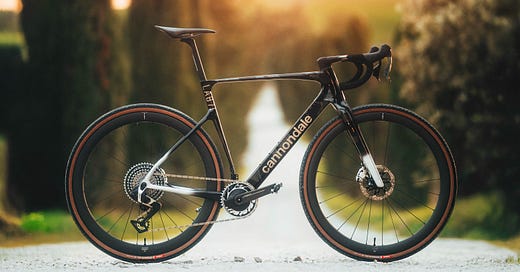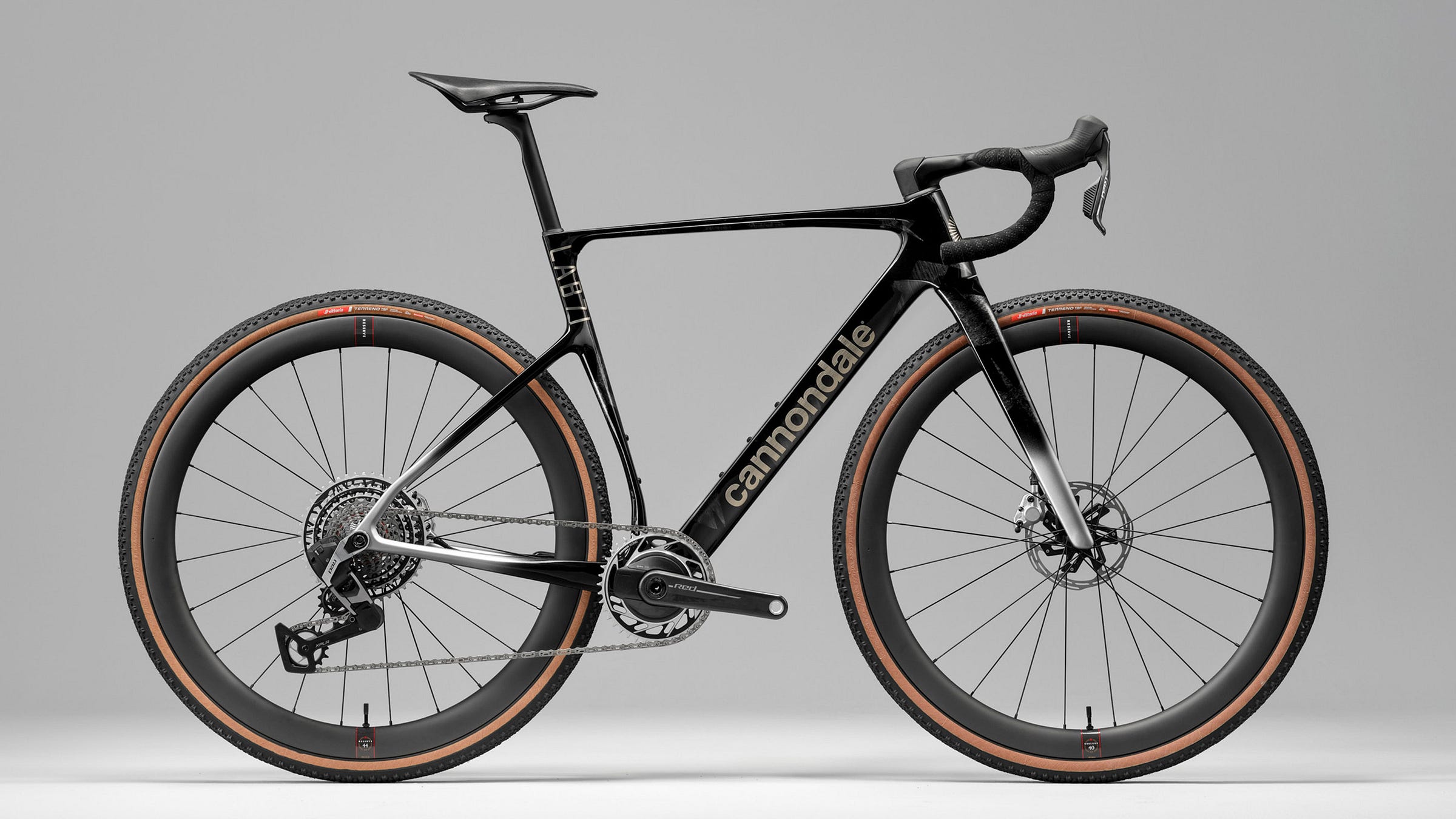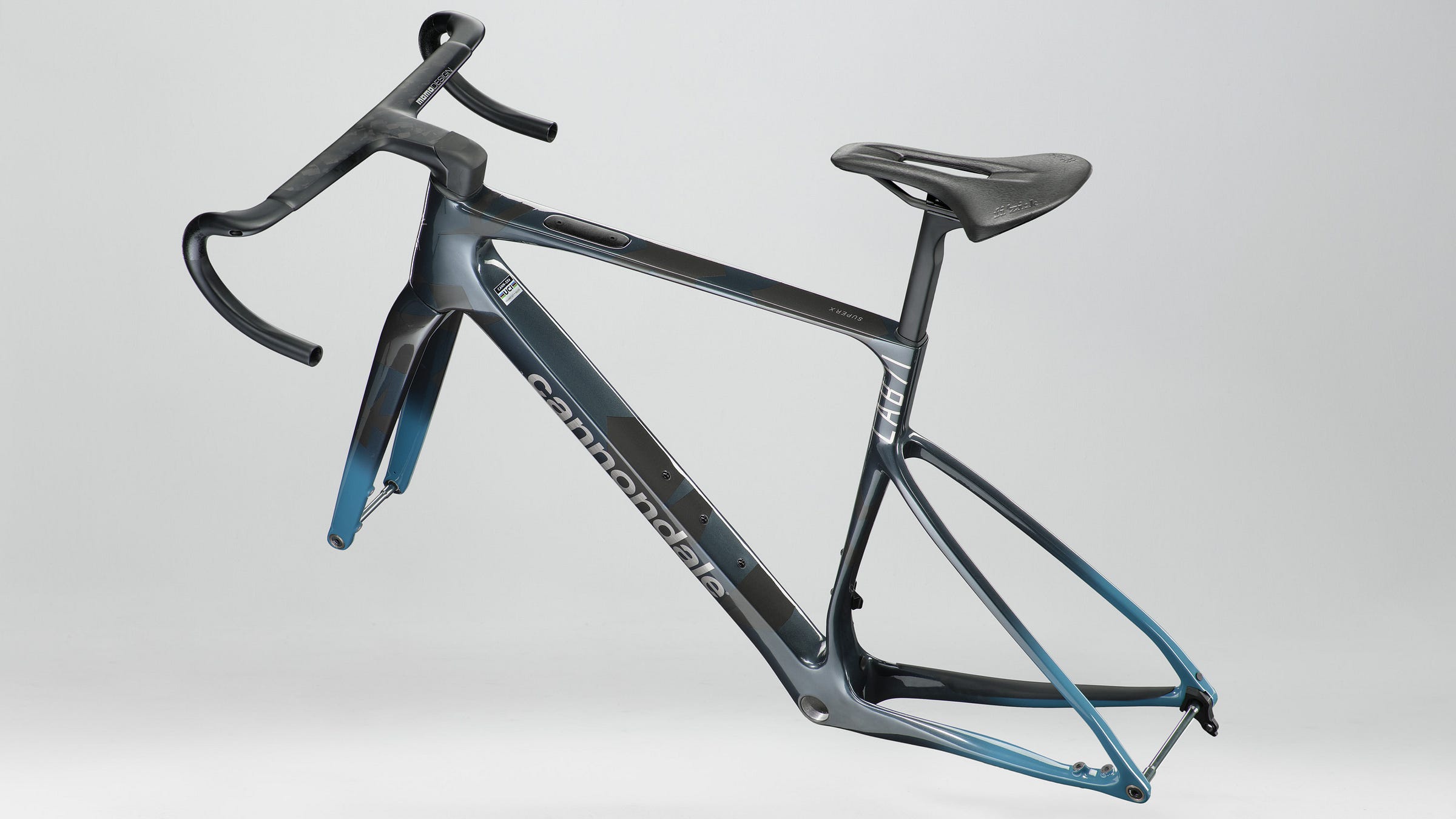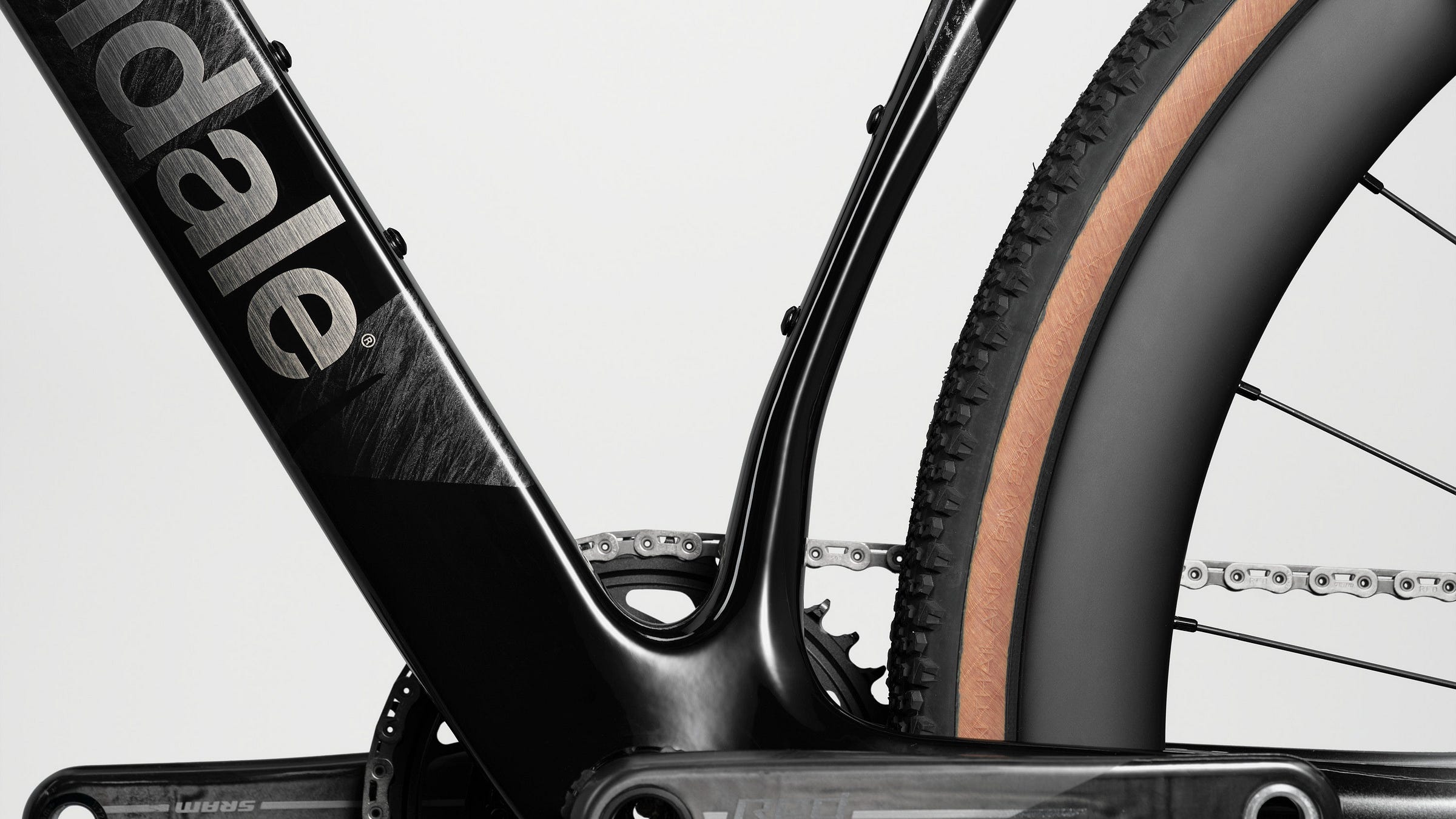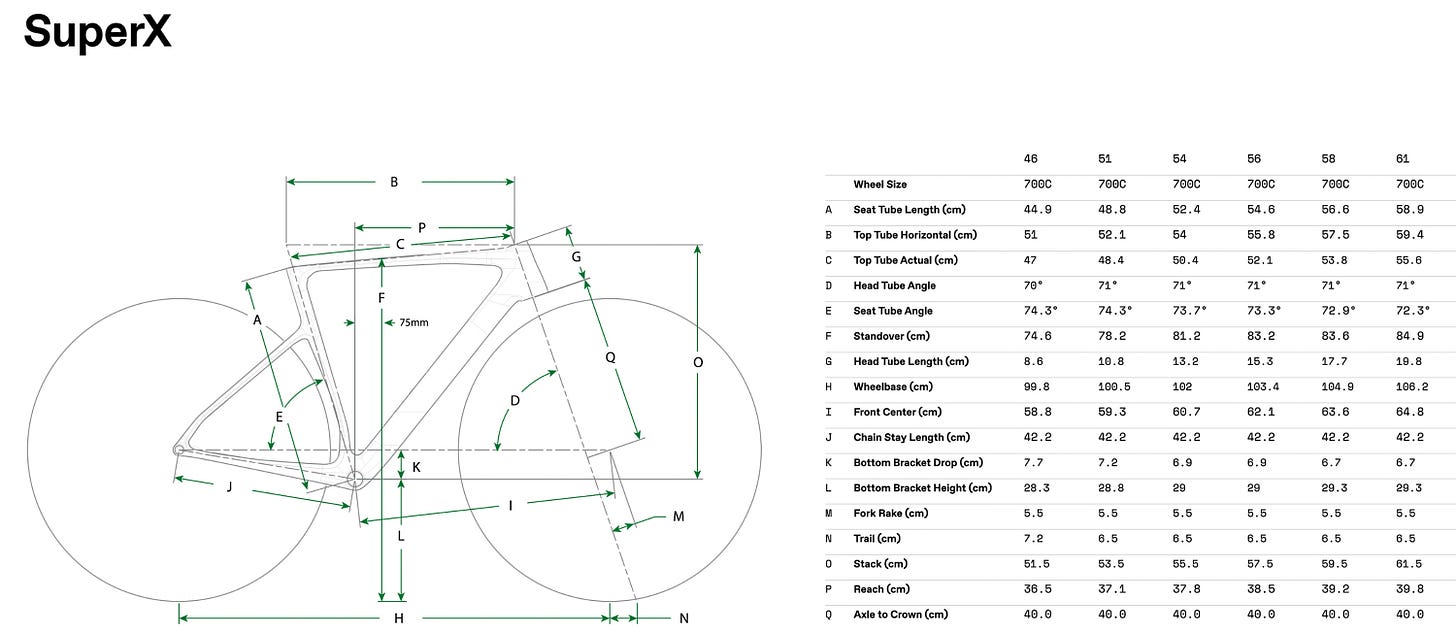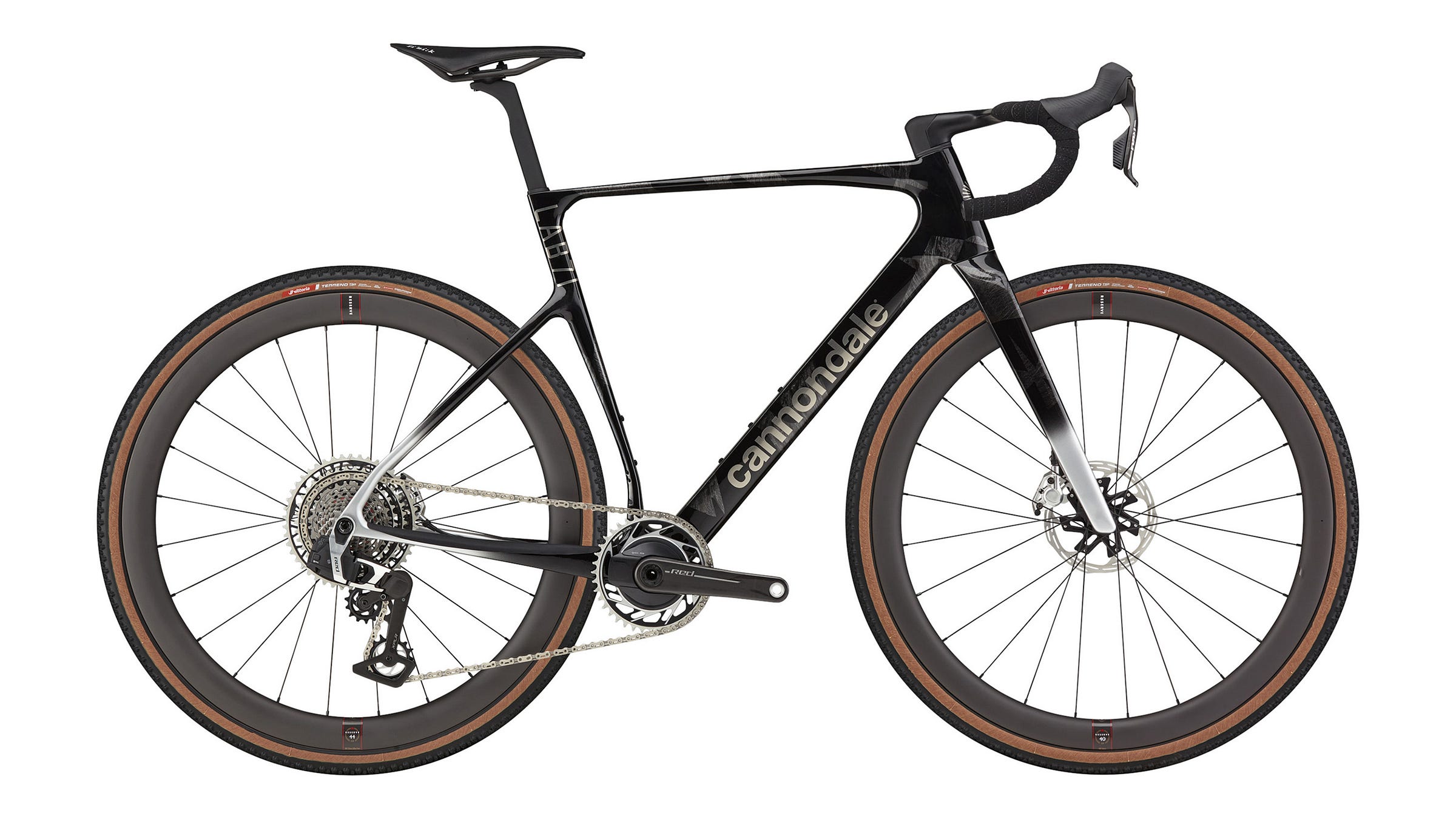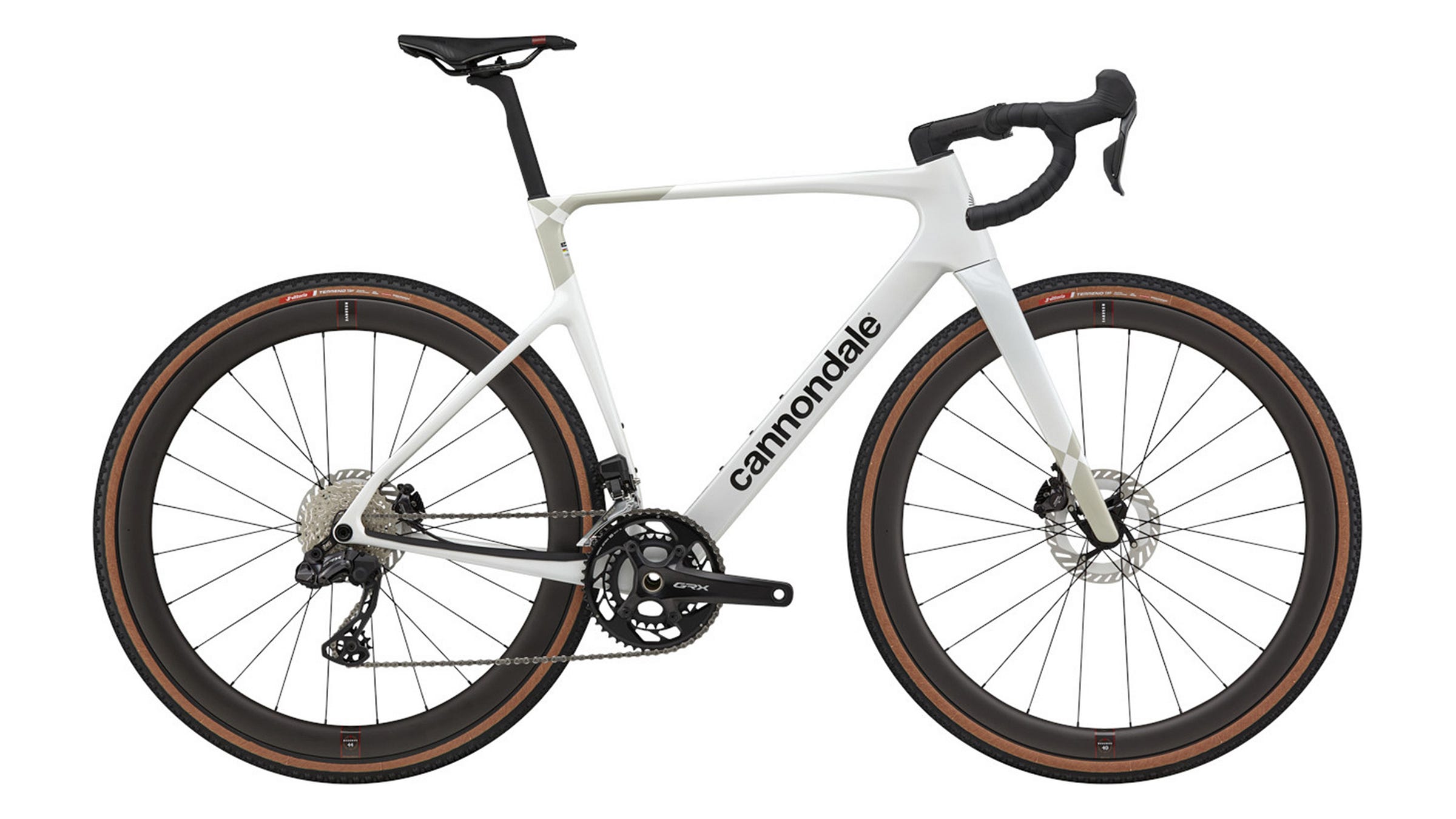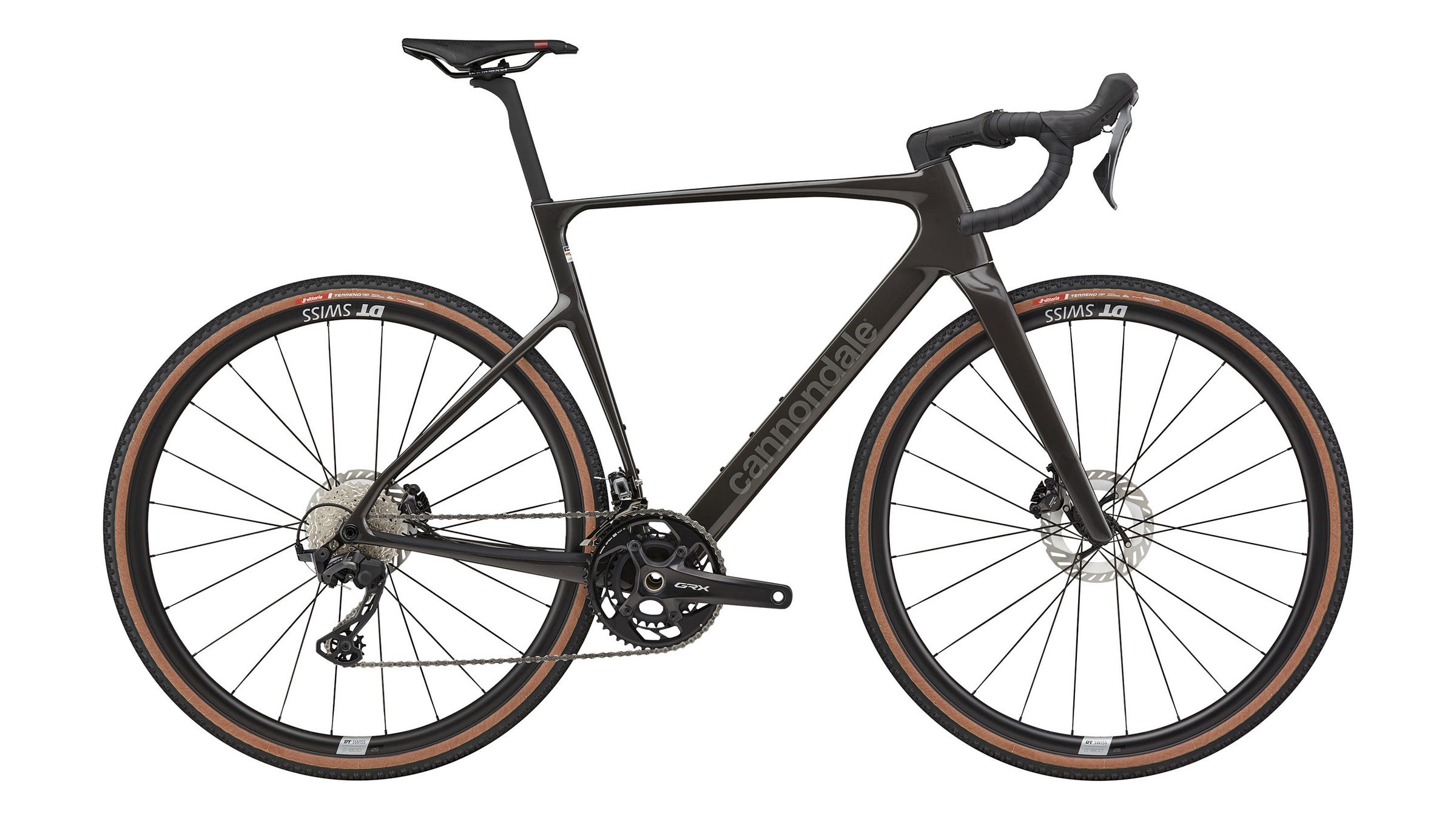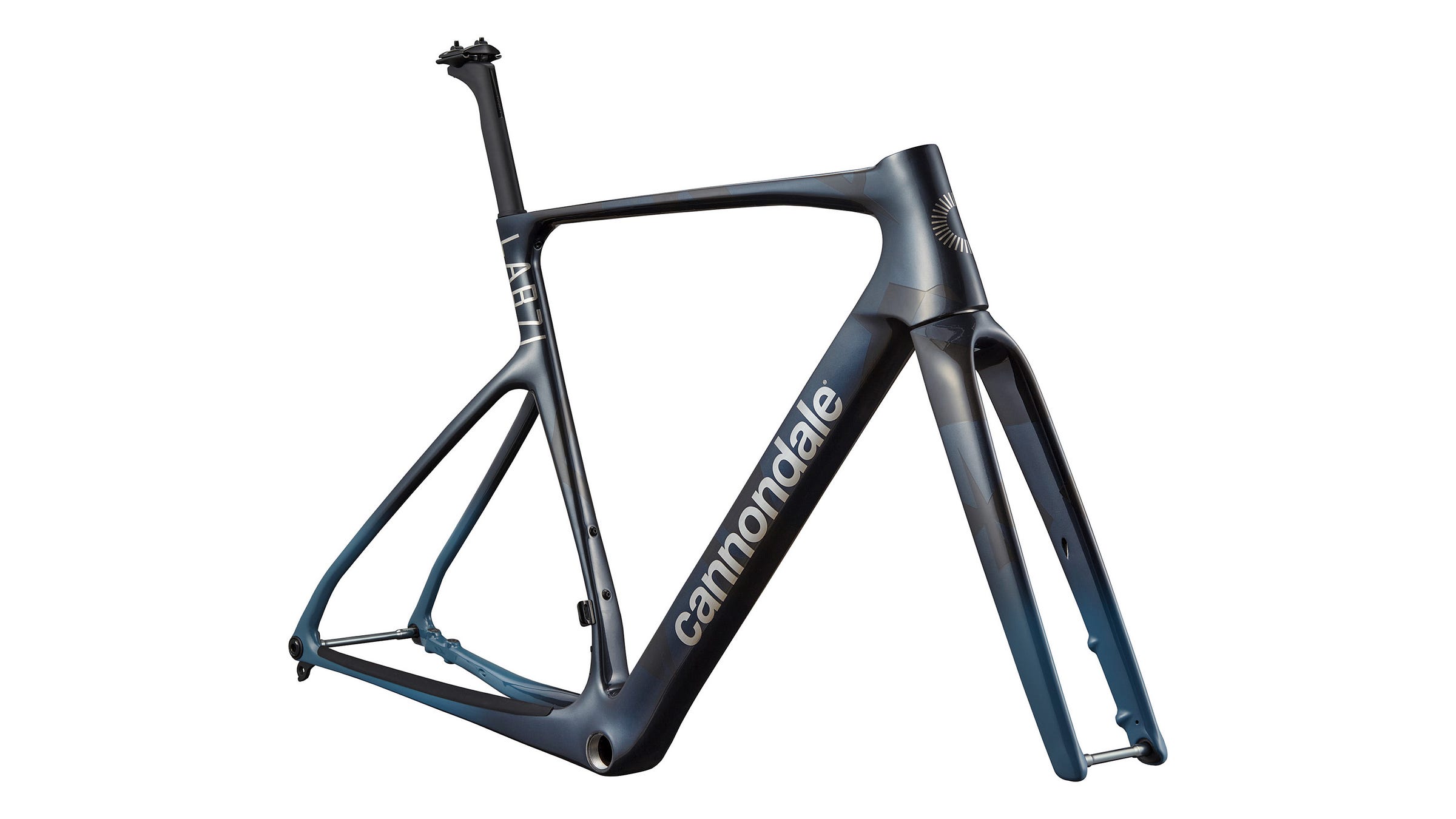The new 2025 Cannondale SuperX goes all-in on gravel racing
Crazy flex zones, aero shaping, a sub-900 g frame weight, and a whole bunch of questions.
“Made to absolutely smash gravel races.”
Well, that makes things pretty clear, eh?
Where gravel was once a singular category that occupied the broad space between all-road and cross-country, we’ve seen it split in recent years into two distinct subsets: all-purpose gravel bikes designed for mellower and more exploratory jaunts, and competition-focused gravel bikes that are basically full-blown road racing machines with fatter tires.
Cannondale’s new SuperX most definitely falls into the latter bucket.
While it obviously could be ridden more casually, that’s apparently not what the SuperX was designed to do. Cannondale says the top-end LAB71 version of the new SuperX weighs just under 900 g for a painted 56 cm frame with (bonded-on) hardware. That’s about 100 g lighter than the outgoing SuperSix Evo CX/SE twins, and also about 100 g lighter than all non-LAB71 versions of the SuperX.
Cannondale also says the new SuperX is more aerodynamic than those old bikes (more on this in a bit), but what I find most striking is the crazy tube shaping used to boost rear-end comfort.
D-shaped cross-sections are commonly used by multiple brands as a way to get more flex out of a seatpost, so it’s no surprise that Cannondale includes ones on the SuperX. But whereas those seatpost shapes are also usually coupled with highly sloping top tubes to increase how much of the shaft is sticking out of the frame (thus enhancing flex under load), Cannondale has instead opted to engineer more movement into the frame itself.
Conspicuously flattened areas are incorporated into not only the chainstays and seatstays, but also the top tube and seat tube. The idea here is those flex zones will allow the entire seat cluster area to twist rearward when a rider hits a bump – not unlike what Trek promises with its IsoSpeed system, but without the need for any physical pivots or additional hardware.
Tire clearance gets a slight bump, too (more on this in a bit, too). Whereas the SuperSix Evo CX/SE frame was rated for tires up to 700x45 mm-wide, Cannondale says the SuperX will accept a 700x48 mm tire out back and a 700x51 mm one up front. Complete bikes are outfitted with 40 mm rubber.
Cannondale says the SuperX also gets size-specific carbon fiber lay-ups to maintain a consistent ride quality throughout the range, and taller riders will be happy to see a new 61 cm size added at the top end.
Geometry-wise, Cannondale has mostly kept things the same from the old SuperSix Evo CX/SE. The company’s so-called OutFront concept carries over, with modestly slack head tube angles (70-71°) matched to a single 55 mm fork rake across the board. This pushes the front wheel a little further out for more confident handling in slippery conditions, while also retaining quick (65-72 mm) trail dimensions for agility. Stack and reach are identical to the CX/SE to the millimeter, with both adopting more road-like figures in contrast to more progressive setups that pair a longer reach with shorter stems. In fact, as compared to Cannondale’s current SuperSix Evo road racer, the reach on the new SuperX is even shorter.
On the plus side, those more traditional figures should also make the SuperX better suited to a cyclocross course than most gravel bikes.
The one notable difference from the SuperSix Evo CX/SE geometry is a steeper seat tube angle across the board, likely to accommodate the more forward seating positions many riders prefer these days (myself included). However, the changes are very subtle – just 0.2-0.4° – with the larger differences seen at the smaller end of the size range.
One change that isn’t surprising at all is cable routing through the headset, a feature enough prospective buyers apparently now expect to see on higher-end drop-bar bikes that virtually no brand can resist switching over. The full-carbon fork on the SuperX gets the same triangular-profile “Delta” steerer tube shape that was first introduced on the current-generation SuperSix Evo, which provides enough space for hoses and housings to sneak through without having to resort to an oversized upper headset assembly.
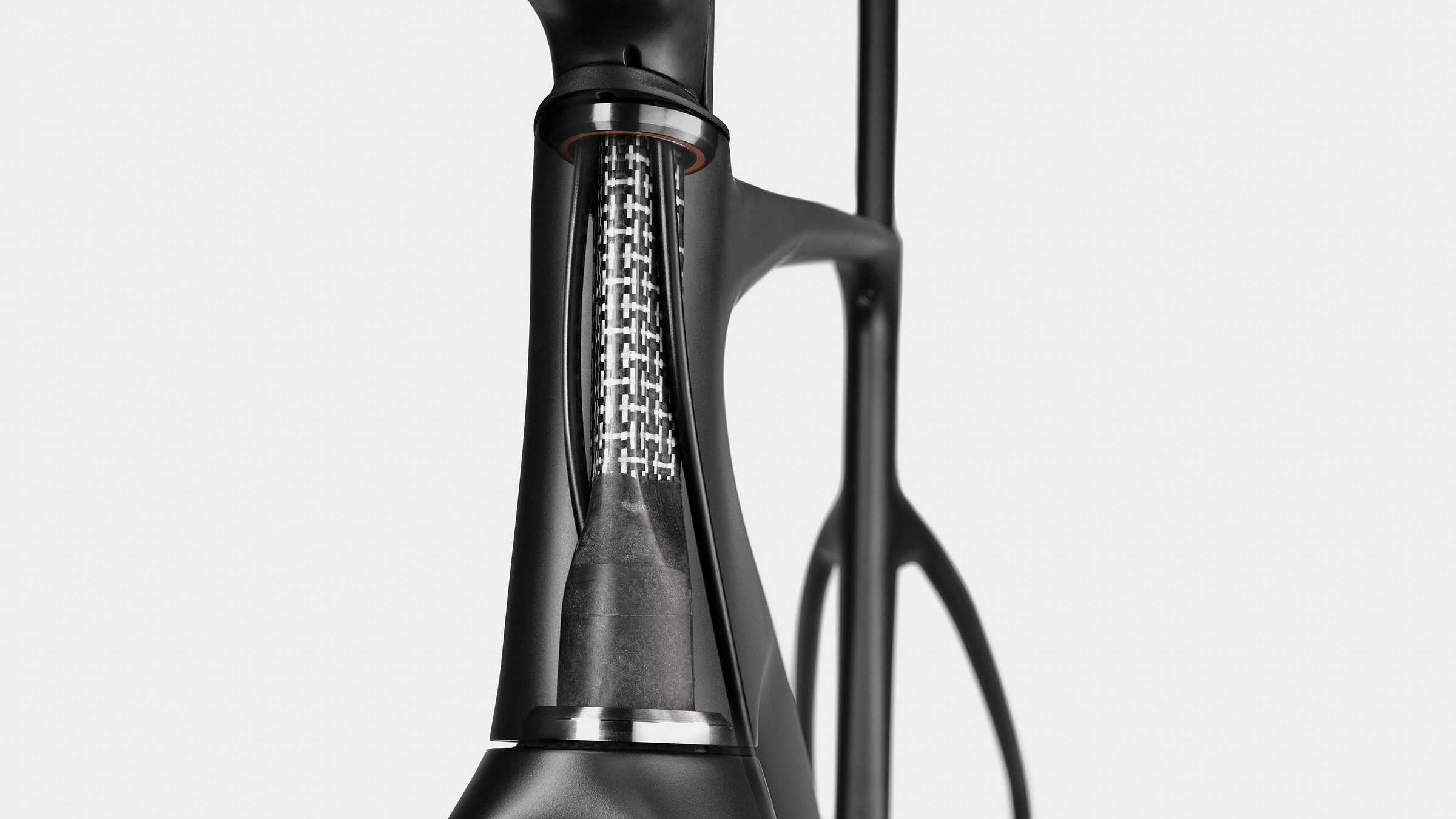
Flagship SuperX models are fitted with fully internal routing on account of their one-piece carbon fiber bar-and-stem assemblies, but everything else features more easily serviceable two-piece setups with control lines that are merely hidden below (not inside) the stem. Either way, Cannondale at least reinforces those Delta steerer tubes with a layer of woven Dyneema fiber to prevent any potential long-term abrasion damage.
Aside from the proprietary seatpost shape (which is at least shared with other Cannondale models) and internal cabling design, the rest of the SuperX is actually pretty normal.
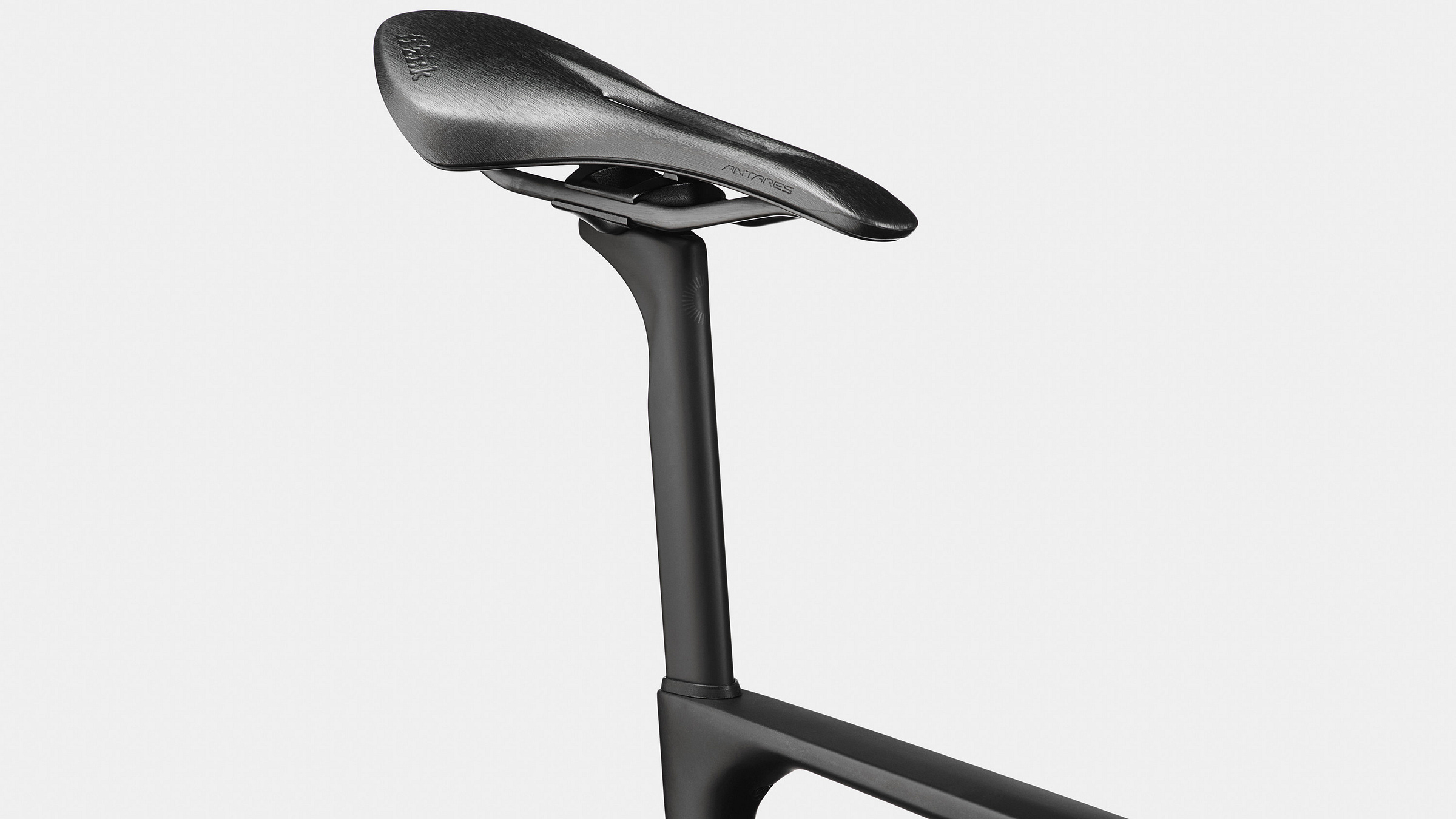
Cannondale has thankfully abandoned its annoying Ai asymmetrical rear end concept so there should be no more issues with wheel and component compatibility. Down below, there’s a standard English-threaded bottom bracket shell, and the frame will accept both electronic and mechanical drivetrains as well as 1x and 2x cranksets. There’s one deviation from the norm that I quite welcome, though: While the rear brake mount is sized for the typical 140 or 160 mm-diameter disc-brake rotors, the front mount is adjusted for a more useful 160 or 180 mm setup. Bravo.
For better or worse, Cannondale is sticking so faithfully to the SuperX’s focus on racing that the frame has a notable dearth of accessory mounts. There are the usual pair of bottle mounts inside the main triangle, pseudo-hidden mounts for a top tube bag, and… that’s it. There isn’t even the option for a third bottle under the down tube, and certainly no built-in frame storage. Worried about getting thirsty? Best make sure your pit crew is where they’re supposed to be.
Oh, and wondering about suspension fork compatibility? Ha ha, you’re funny.
Models and pricing
The SuperX will be offered in three complete models: one with the flagship LAB71 frame, the others with a somewhat more affordable fiber blend and lay-up. The LAB71 SuperX will also be offered as a bare frameset for DIYers.
Not much expense is spared for the complete LAB71 SuperX, which is built with a SRAM Red AXS XPLR wireless electronic 1x13 groupset (with power meter), Reserve 40/44 aero carbon rims with DT Swiss 180 hubs, 700x40 mm Vittoria Terreno T50 tires, and Cannondale’s SystemBar R-One integrated front end for a stratospheric US$15,000 / £12,500 / €15,000 / AU$19,000.
The second-tier SuperX 2 goes 2x with a Shimano GRX 825 Di2 wiredless electronic groupset, Reserve 40/44 aero carbon rims with DT Swiss 370 hubs, 700x40 mm Vittoria Terreno T50 tires, and a two-piece aluminum cockpit. Retail price is US$6,800 / £6,550 / €6,900 / AU$9,500.
And finally, there’s the SuperX 3 with a Shimano GRX 820 2x12 mechanical drivetrain, DT Swiss G1800 aluminum rims with DT Swiss 370 hubs, 700x40 mm Vittoria Terreno T50 tires, and a two-piece aluminum cockpit. Retail price is US$4,200 / £4,250 / €4,500 / AU$6,000.
The LAB71 SuperX frameset carries a price tag of US$5,500 / £4,950 /€5,500 / AU$8,000.
Cannondale provided claimed weights for complete bikes, but not quite in a direct apples-to-apples format. A 56 cm LAB71 SuperX supposedly tips the scales at just 7.4 kg (16.3 lb) for a 56 cm size set up tubeless with a slammed stem, and without pedals. A 56 cm SuperX 2 is said to be 8.6 kg (18.9 lb), also set up tubeless and without pedals, but with a 20 mm headset spacer. And finally, Cannondale says the SuperX 3 is 9.1 kg (20.0 lb), but that’s for a 54 cm bike with a 20 mm headset spacer and inner tubes, still without pedals.
Regardless, I wish Cannondale had decided to also offer the second-tier SuperX as a frameset-only like Specialized does with the Crux. As much as I personally really like Shimano’s current GRX groupsets, the fact of the matter is far more people seem to want SRAM’s wireless 1x XPLR setups, which neither of the complete non-LAB71 models offers. And unfortunately, the LAB71 frameset is just too expensive for savvy DIYers who tend to be a little more scrupulous with their money.
But along those lines, notice that there’s a SuperX 2 and a SuperX 3, but no SuperX 1. Cannondale’s product managers would be pretty foolish to skip over a SRAM build entirely (beyond the flagship LAB71 model, of course), and given rumors that SRAM is announcing a revamped Force AXS XPLR groupset later this year, it doesn’t take a rocket scientist to put the pieces together there.
Digging deeper
On the surface, the new SuperX seems awfully appealing to me on paper. I’ve long been a fan of rally car-style bikes that are fun to ride fast on unpaved surfaces, and as an evangelist of the smoother-is-faster school of thought, I’m happy to see Cannondale devote so much energy toward rider comfort.
That said, digging deeper leaves me with a bunch of questions, too – and I’m not sure I’m entirely satisfied with all of the answers Cannondale provided.
Keep reading with a 7-day free trial
Subscribe to n-1 to keep reading this post and get 7 days of free access to the full post archives.


